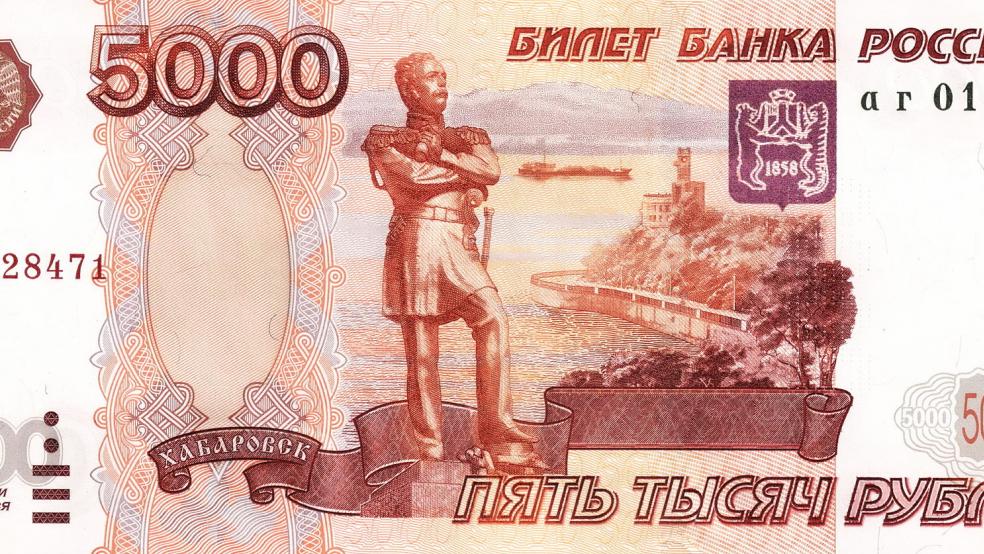Oil prices took another dive Thursday morning and, as usual, the Russian ruble went with them, hitting record lows against the dollar on international currency markets. But in more bad news for Russian President Vladimir Putin, when oil rallied later to finish in positive territory for the day, it left the ruble behind.
Everyone should remain calm, said Putin spokesman Dimitry Peskov Thursday, suggesting that the continued decline in value of the nation’s currency was nothing to worry about.
Related: Did Putin’s Diplomatic Coup with Iran Hurt Him More Than It Helped?
However, it’s never a good day in the PR shop when you are forced as Peskov was to say things like, “I would not use the word ‘collapse,’” when discussing your national currency. The exchange rate “is changing indeed,” Peskov said. “The rate is volatile but it is a far cry from collapse.”
Investors and ordinary Russians might beg to differ. Only three years ago, it cost about 30 rubles to buy one U.S. dollar. At close of business yesterday, it cost more than 82, and the figure was rising still in after hours trading. In the past three months, the ruble has lost another 31 percent of its already-diminished value against the dollar.
Peskov tried to paint a picture of a Kremlin where everything is business as usual, and said there are no emergency measures being contemplated by Putin and his advisers.
“Meetings are held now on the regular basis in the government, in the cabinet of ministers," Peskov said. "There are no special meetings planned for the president until the end of this week," he added.
Related: Putin Says tensions in Europe Are the Fault of the U.S.
However, not everyone among Moscow’s economic elite got the memo. Russian Central Bank head Elvira Nabiullina abruptly canceled her visit to Davos, Switzerland, where she was supposed to participate in a panel at the World Economic Forum.
At the same time, though, the bank said that it is not planning any extraordinary steps to attempt to shore up the ruble. In 2014, when the currency’s value started to plummet, the central bank poured tens of billions of dollars in foreign reserves into the market, buying rubles in order to keep prices up. The efforts failed, and near the end of that year, the bank announced that going forward, it would only intervene in the currency markets to prevent “financial instability.”
However, on Thursday night, Russian central bank officials reportedly met with representatives of the country’s commercial banks; among other things, they were expected to discuss how banks will be expected to value their ruble holdings against obligations denominated in other currencies – a major issue for banks required to meet safety and soundness standards.
The central bank’s press release about the meeting was typically anodyne: “The Bank of Russia held a working meeting with the leadership of banking associations and several banks regarding the conditions and prospects of banks' crediting of the economy in 2016.”
But that’s not the sort of thing that forces a central banker to forego a trip to Davos.





